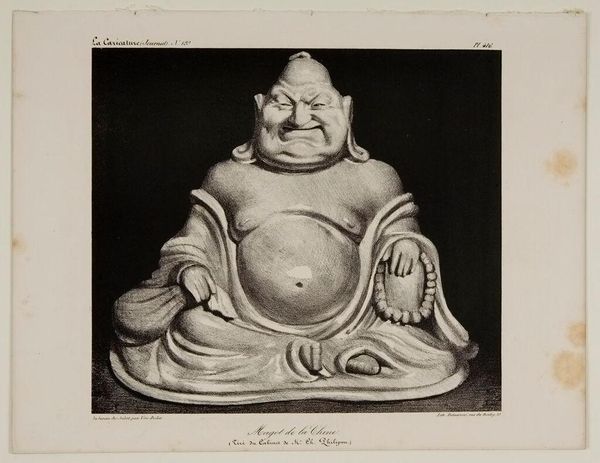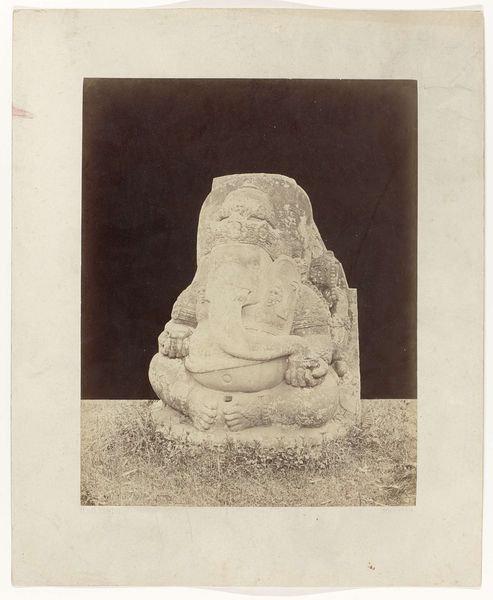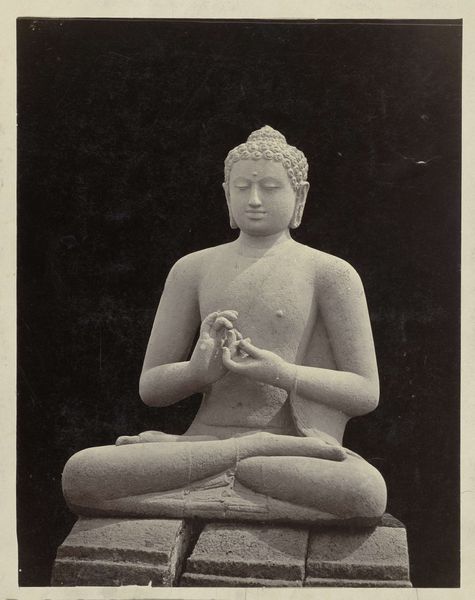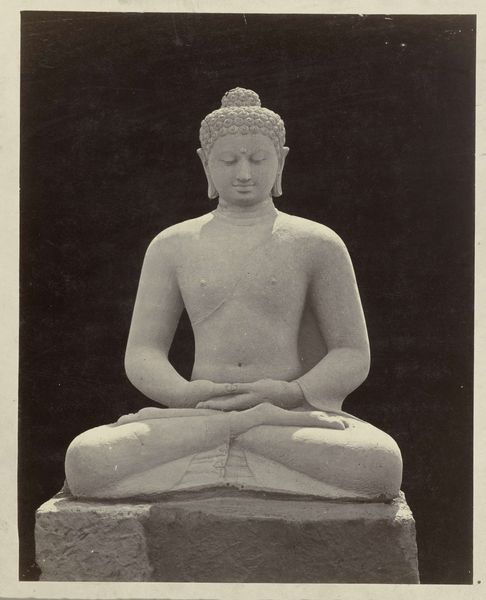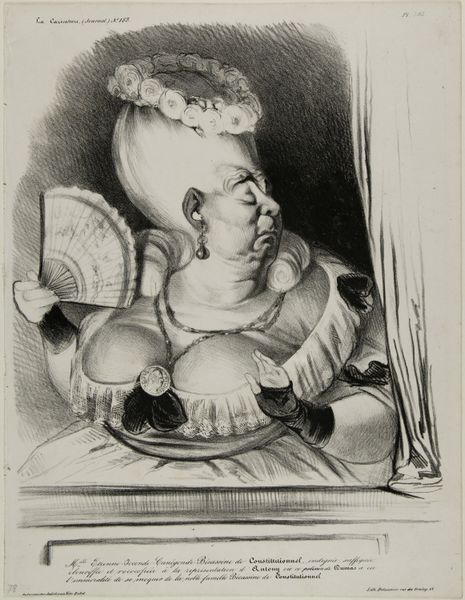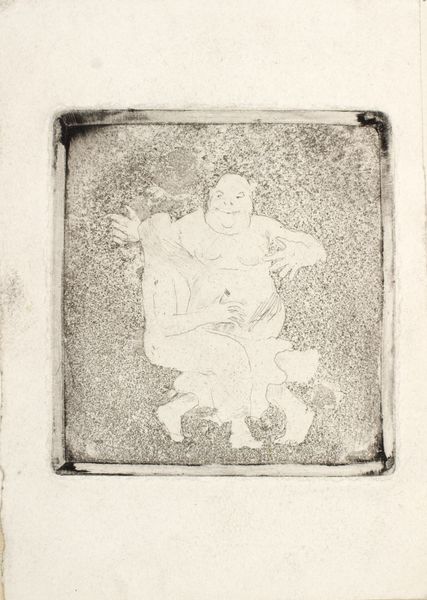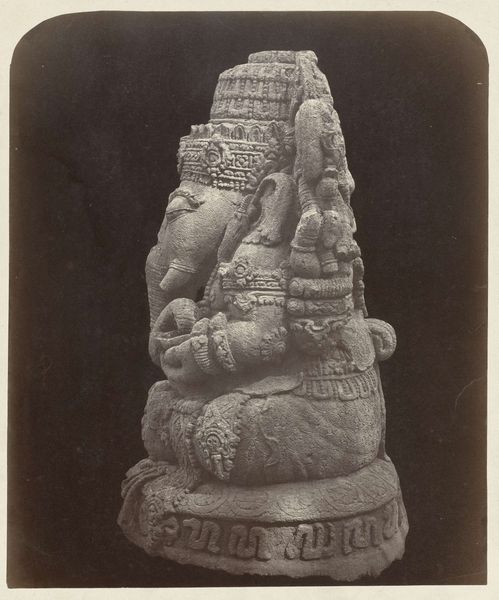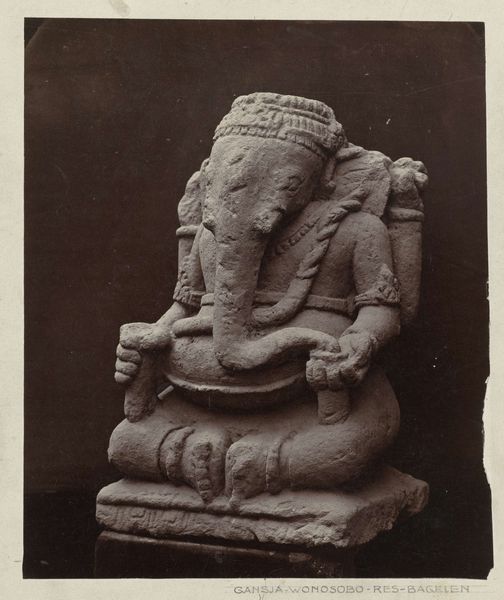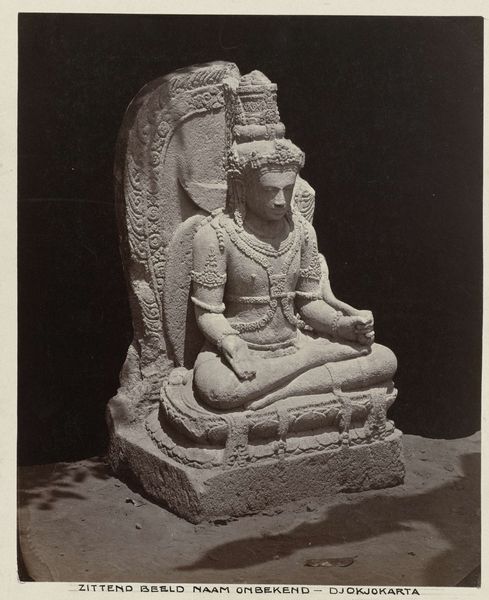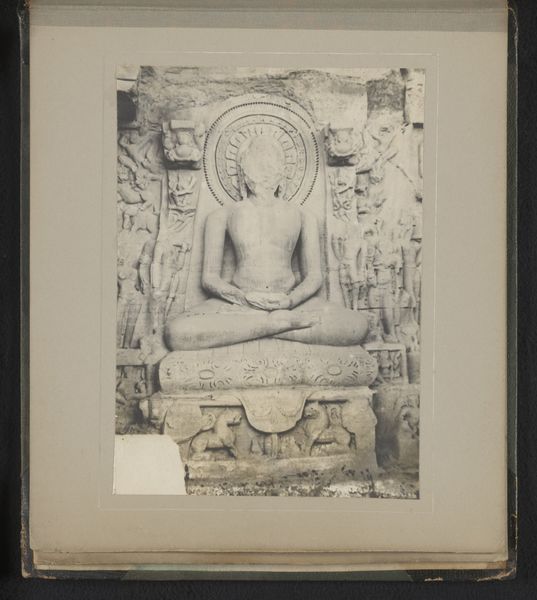
Porcelain figure from China (taken from the private collection of Mr. Charles Philipon), plate 416 1834
0:00
0:00
drawing, lithograph, print, paper
#
portrait
#
drawing
#
lithograph
# print
#
caricature
#
sculpture
#
charcoal drawing
#
paper
#
charcoal art
#
portrait reference
#
orientalism
#
portrait drawing
#
statue
Dimensions: 214 × 242 mm (image); 271 × 355 mm (sheet)
Copyright: Public Domain
Editor: Here we have Honoré Daumier’s lithograph from 1834, "Porcelain figure from China." It's quite striking; the figure's exaggerated features and posture almost feel… satirical? How do you interpret this work? Curator: This lithograph offers a potent commentary on orientalism and European perceptions of Eastern cultures during the 19th century. Consider the historical context: France, like many European nations, was deeply involved in colonial endeavors. How do you think Daumier’s caricature might be reflecting or perhaps even critiquing this dynamic? Editor: It’s interesting you mention colonialism. The exaggerated features and title could be interpreted as mockery, perhaps highlighting the European tendency to exoticize and misrepresent other cultures? Curator: Exactly. The "Porcelain Figure" becomes a symbol, a vehicle for Daumier to explore the power dynamics inherent in cross-cultural representation. Is he making a statement about the figure itself, or is he using it to reflect on the mindset of the collector, Mr. Philipon, and perhaps the French society of the time? Editor: That’s a great point. The focus shifts from the object to the observer, implicating them in this act of orientalist appropriation. It raises questions about cultural ownership and the gaze. Curator: Indeed. By presenting this figure as a caricature, Daumier challenges viewers to consider their own preconceptions and biases, engaging with themes that still resonate within postcolonial discourse today. What do you make of Daumier's decision to depict this in a mass-produced print, accessible to a wider audience? Editor: Distributing it widely suggests he intended to spark public discourse and reflection. It makes you wonder how audiences reacted back then, and how differently we perceive it now. Curator: Precisely! Looking at this artwork encourages us to think about not just the piece itself, but also the ever-evolving historical and social landscapes that shape our understanding. Editor: I never thought about caricature as a form of social commentary. Thank you for enriching my perspective!
Comments
No comments
Be the first to comment and join the conversation on the ultimate creative platform.
